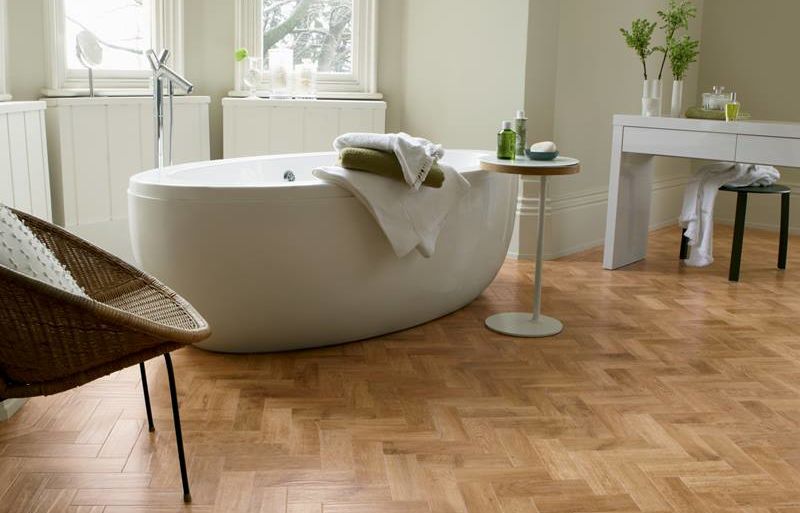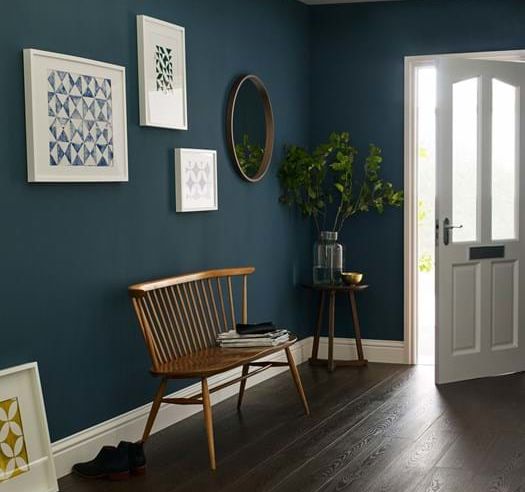Vinyl Flooring vs Laminate Flooring - Which is best?
What’s the difference?
For many people, deciding between Laminate Flooring and Luxury Vinyl Flooring can seem very confusing. In many respects, the two flooring solutions have many similarities and yet they are distinctly different. So, what is the difference?
LVT (as it is commonly known) and Laminate flooring are often compared, particularly because both are similar in terms of cost and durability - especially when compared with other hard surface flooring solutions such as natural tile, hardwood and stone. Both Luxury Vinyl Flooring (whether in tile or plank form) and Laminate flooring imitate natural materials such as wood or stone, in fact they can be designed to mimic many flooring surface types!
With both Laminate floors and LVT the design you see on top is actually a high definition photograph designed to replicate natural materials placed onto the tile or board before being covered by a protective layer. Both options have the option of bevelled edges and textured finished to add to the authenticity.
The primary difference is that Laminate flooring generally replicates wooden flooring whereas LVT provides a much wider selection of design options in wood, stone, natural and graphic options which means both LVT and Laminate flooring is a popular choice for those looking for a beautifully designed flooring solution.
So with design aside and so many options available, Hamilton Flooring is on hand to dispel some of the confusion around the differences between Luxury Vinyl Flooring and Laminate flooring.
LVT and Laminate Flooring Materials
An initial difference between LVT and Laminate is the level of sound produced, LVT like Karndean or Amtico are much quieter underfoot than laminate. This is due to the composition of the flooring - LVT is made from a vinyl configuration which is malleable and soft whereas Laminate is created from a much more rigid fibreboard. In terms of environmental impact, Laminate has the upper hand over LVT as fibre board is composed of pieces of recycled wood pulp pressed together under high pressure to create a board which is not only environmentally friendly but also a cost effective method of production meaning the product itself is friendlier to the wallet! LVT is also a cost effective flooring solution but as it is made from PVC materials it is often not as environmentally friendly as laminate although many companies are looking at sustainability and green issues within their manufacturing process. The benefit of PVC-based composition is the durability of the end product meaning that LVT is very tough and often has very long warranties and is generally warmer and quieter underfoot than Laminate flooring.

Characteristics of LVT and Laminate Flooring
The characteristics of each flooring type is another major difference. Laminate flooring is much more susceptible to environmental changes such as temperature or moisture and both LVT and Laminate should have scratch resistance considered when deciding between them for your flooring.
LVT vs Laminate Flooring: Installation
Both flooring types are considered relatively easy and quick to install making them a popular choice for residential and commercial flooring alike. With Laminate flooring, moisture or high humidity can easily impact the product if not controlled during installation as the core of Laminate flooring acts as a sponge, absorbing any moisture which would cause it to expand. This expansion is not always an issue but if there is not enough space for the floor to expand and contract naturally there is a high likelihood that the floor will warp and the joints creak when walked upon.
Laminate floors use a locking mechanism and as a floating floor system they are laid upon underlay and therefore require no adhesives or nails. For this reason, Laminate flooring is popular among DIY enthusiasts though it is recommended that an expert be consulted for the best possible finish. On the other hand, LVT are almost always adhered and therefore require a professional fitter.
LVT vs Laminate Flooring: Temperature
Laminate flooring will react to significant changes in temperature with heat causing expansion and contraction in the colder weather which can create splitting and buckling if not managed.
Flooring With Underfloor Heating
Both LVT and Laminate flooring are compatible with most underfloor heating systems and are resistant to temperatures up to 27 Celcius. As previously mentioned, Laminate is more susceptible to temperature changes so leeway is required to ensure that the flooring does not buckle.

LVT vs Laminate Flooring: Moisture
Moisture is the enemy of Laminate flooring as it causes the planks to warp as they dry out meaning the Laminate flooring is not ideally placed for use in bathrooms, kitchens and utility rooms where the instances and likelihood of water contact is high.
The biggest issue with Laminate flooring and moisture is that when liquid is in frequent contact with the seams of the planks they tend to swell and lift causing permanent damage. LVT on the other hand is much more heavy duty when it comes to water and the installation process and layered PVC composition means that LVT is water resistant for the most part and on the occasion when water does permeate, they do not warp or buckle when they dry out.

LVT vs Laminate Flooring: Scratch Resistance, Durability & Ease of Maintenance
This is a category that both flooring types excel at - both LVT and Laminate flooring are incredibly durable and hard wearing as well as being resistant to scratches because of the tough wear layer that each product is coated with. This means that both types are perfect for high traffic areas.
The aspect of this where a difference can be noted is in long term care. LVT Flooring can be fully recoated with a new wear layer to reinvigorate the flooring after many, many years - however Laminate flooring is not able to be recoated as a whole. However, if there is a significant scratch or dent in either flooring solution, a small area replacement is possible with both LVT and Laminate flooring.
Both flooring solutions are easier to maintain than wood, tile or stone as they dont need regular refinishing, resealing or regrouting and both are more resistant to staining than their natural counterparts.

So, Which is better? LVT or Laminate?
If you are looking for a stylish, economical yet durable flooring solution, either LVT or Laminate would be well suited to your needs. In terms of which is better, there are so many similarities it is a tough one to call. On the whole, LVT scores better across the board - it is less prone to damage from water and temperature, it has more design options available and LVT is suited to almost all flooring solutions whether they are living rooms, bathrooms, kitchens, shops or office spaces.
Laminate is a better choice if you want to be able to DIY installation but professional floor laying is always the best option, particularly for unusual room shapes or less than ideal under floor conditions. For more information about LVT Flooring, read Luxury Vinyl Flooring: Is it the right choice for me?
If you are still unsure of the best option for you, contact one of our flooring experts at Hamilton Flooring for bespoke advice specific to your requirements.
Unless otherwise stated, Images are used for illustrative purposes and do not represent work untaken by Hamilton flooring - examples of work completed can be found in our Gallery

